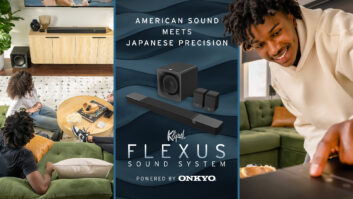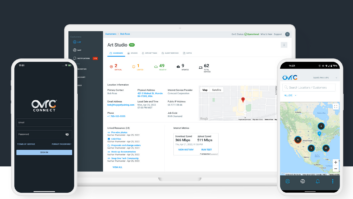It’s Friday night and here I am battling with the PC-based setup menus of a surround processor instead of going out for a good dinner paired with the finest Malbec at the latest trendy Los Angeles restaurant.

Anthem has the right idea with this set-up menu for its Statement D2v AV preamplifier/processor.
Configuring a surround processor should be pretty straight forward. You set up the inputs, preprogram the surround modes for each digital or analog type, set up the speaker configuration and bass management, set the channel level calibration, and set up the speaker distances. End of story. On some units, there is also an auto-EQ/room compensation process, and that should be a matter of a few simple button pushes.
The particular unit that I was wrestling to the ground last week cost in excess of $10k, comes with great reputation and pedigree, and no doubt has superb sounding electronics. However, the user interface for both the installer and the end user were just plain unwieldy. The instruction manual was no real help, although very pretty, and the USB PC interface lost connection on a regular basis, needing to be reset through power cycles and application restarts. A process that should take one hour, took five hours, much to the chagrin of the homeowner who was hoping to enjoy his new theater that Friday evening.
In the end, through endurance, much manipulation, many verifications using external test discs, and several workarounds, I got the configurations, the levels, the delays, and the room EQ set. The latter ended up being done manually because the automatic routine failed to properly load the coefficients to the memory slots, even after eight attempts. This was OK by me, because at least this manufacturer offered a way to set up several EQ filters manually and store them to the unit’s processor DSP engine. I often find that the automated processes for room correction lack finesse in fully tuning equalization, so some amount of manual intervention is good.

Anthony Grimani (agrimani@ pmiltd.com) is president of Performance Media Industries, a California-based acoustical engineering firm specializing in home theater design and calibration.
Oh, and by the way, this high-end product comes with no test microphone. The dealer is expected supply the acoustic measurement through an external SPL meter, which would have a microphone pre-amplifier output fed to one of the analog line inputs on the rear panel of processor. In comparison, even the most basic receiver at one-tenth the cost provides a reasonable microphone.
THE LESSON LEARNED
I won’t be naming names in this article, even if you bribe me with a bottle of Malbec. What I will tell you is that as an integrator you must think clearly when specifying products into your clients’ projects. The product should provide good sound and picture and offer the right features. It should be stable and reliable and easy to integrate to industrystandard automation controllers. And it should be straightforward to configure, set-up, and calibrate.
How do you figure all this out? I suppose that you can ask your engineers and technicians what they think. You can try to use it yourself for a few days. You could also ask a consultant that specializes in engineering issues for AV environments what he thinks. This person will need to charge you for his work, but you will save that money on the first installation.
A MESSAGE FOR MANUFACTURERS
I encourage product manufacturers that are reading this to KISS (Keep It Simple, Sir). Ultimately there is no need to provide a million setup features and options that no one is going to use. A simple on-screen menu for the basic critical functions in a standardized order and with standardized language would be sufficient.
The reason all of this is important is that a system with an incorrectly configured and calibrated surround decoder will just not sound good. I don’t care how expensive or sonically pristine the product is, the soundfield balance will be out, the spectral balance will be wrong, and the overall experience will be broken.
THE SILVER LINING
At the end of my lengthy set-up session, the client took a listen to the short demonstration clips I played, and with great emotion said “This sounds miles better than it ever has; thank you.” He then paid the fee for having me there five hours and thanked me for coming over. He could easily see the value of having me there. I just think it would have been much easier if the basic structure of this product had been kept simpler.







